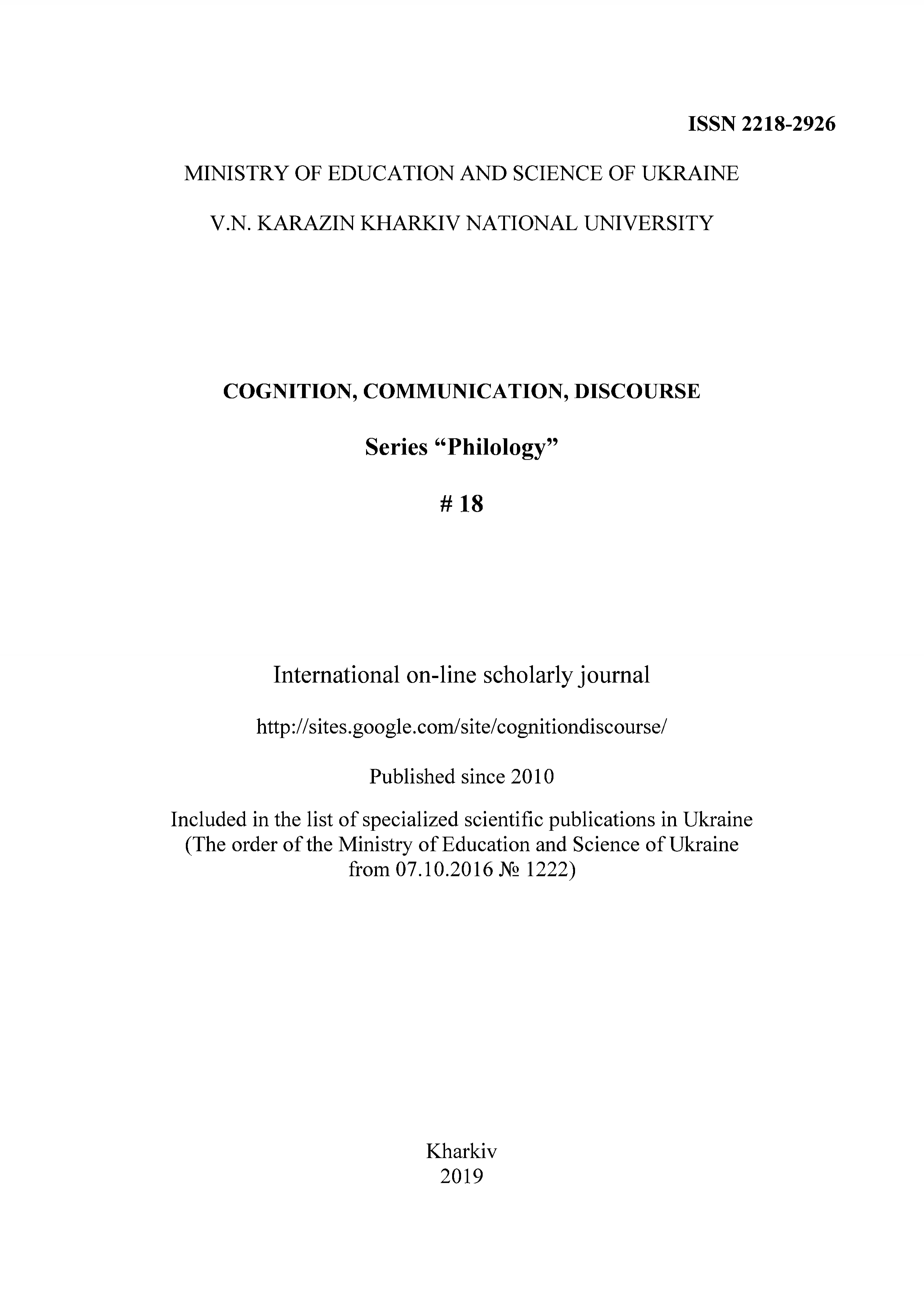Cultural Specifics of Precedent Names as a Factor of Cognitive Equivalence in Translation
Abstract
The article aims at establishing cultural and cognitive factors influencing the translation of precedent names (PNs). As a prototypical means of conveying firmly established meanings, PNs reveal cognitive mechanisms of expressing the most relevant values through metaphors. Functioning both at the linguistic and cognitive level, PNs accumulate characteristics of stereotype, prototype, metaphor and intertext jointly forming the concept of precedence which determines the degree of cognitive equivalence in case of PNs translation. We claim that cognitive equivalence is the principal criterion for successful PNs rendering since it allows for maximum possible correspondence of the meanings the author embodied in the name and those actualized in the mind of the target reader. The highest degree of cognitive equivalence correlates with preservation of all the elements of precedence, though some of them may be sacrificed to ensure integrity at the level of the entire message. Differences in conceptualizing reality by various cultures lead to discrepancies in the perception of certain phenomena or even loss of precedence inherent in a name when transferred to the target culture. Whether consciously or unconsciously, the translator attempts to establish the scope of PNs use both in the source and target cultures. Proceeding from the cultural status of PNs, (s)he seeks to anticipate if a direct equivalent of the original name invoke the image intended by the author. If in the receiving culture, a PN appeals to a different meaning not established as the prototype of the necessary quality or does not actualize any image, the translator uses transformations aimed at compensating the lack of background knowledge for a potential reader. The degree of transformations the translator resorts to depends heavily on the cleavage between the source and target cultural environment and, consequently, the meanings PNs will communicate for the readers of the original and the translation. The strategies translators employ in literary translation support the hypothesis of the research concerning the interrelationship among the cultural identity of PNs, methods of their translation and the degree of cognitive equivalence achievable against the background of culture-specific constraints.
Downloads
References
Boguslavska, L.A. (2017). Vidtvorennya movnoyi gry L. Kerrolla v anglo-ukrayinskyx perekladax: kognityvnyj aspect [Representation of the word play of L. Carroll in the English-Ukrainian translation: cognitive aspect]. Unpublished candidate dissertation, V.N. Karazin Kharkiv National University, Kharkiv, Ukraine. (in Ukrainian).
Fesenko, T.A. (1999). Realnyj mir i mentalnaja realnost: paradigmy vzaimootnoshenij [Real world and mental reality: relationship paradigm]. Tambov: G.R. Derzhavin Tambov State University Publ.
Grishayeva, L.I. (2004). Fenomen precedentnosti i preemstvennost kultur [Phenomenon of precedence and culture succession]. Voronezh: Voronezh University Publ.
Gubernatorova, E.V. (2014). Metafora kak kompressirovannyj komponent perevoda: dejatelnostnyj aspekt [Metaphor as a compressed translation component: activity-oriented aspect]. Barnaul: AltGU Publ.
Kristeva, Yu. (2000). Bahtin, slovo, dialog, roman [Bakhtin, word, dialogue, novel]. Moscow: IG Progress Publ.
Kuzmina, N.A. (2004). Intertekst i ego rol v processah formirovanija pojeticheskogo jazyka [Intertext and its role in the processes of the poetic language creation]. Moscow: Editorial Publ.
Lewandowska-Tomaszczyk, B. (2010). Re-conceptualization and the Emergence of Discourse Meaning as a Theory of Translation. In B. Lewandowska-Tomaszczyk (Ed.). Meaning in Translation (pp. 105-148). Frankfurt am Main : Peter Lang.
Lewandowska-Tomaszczyk, B. (2015). Equivalence. In L. Bogucki, S. Gozdz-Roszkowski, P. Stalmaszczyk (Eds.). Ways to Translation (pp. 9-44). Lodz : University of Lod Publ.
Pshjonkina, T.G. (2005). Verbalnaja posrednicheskaja dejatelnost perevodchika v mezhkulturnoj kommunikacii: psiholingvisticheskij aspekt [Verbal mediation of a translator in intercultural communication: psycholinguistic aspect]. Unpublished doctor dissertation, Barnaul, Russia (in Russian).
Sickinger, P. (2012). Mental Models and Linguistic Cues: Investigating the Interface Between Language and Mental Representation Across Cultures. 35th International LAUD Symposium: Cognitive psycholinguistics: Bilingualism, cognition and communication. Essen: LAUD, 125-146.
Sickinger, P. (2017). Aiming for Cognitive Equivalence – Mental Models as a Tertium Comparationis for Translation and Empirical Semantics. Research in Language, V. 15:2, 213-236.
Authors, who publish with this journal, accept the following conditions:
The authors reserve the copyright of their work and transfer to the journal the right of the first publication of this work under the terms of the Creative Commons Attribution License (CC BY), which allows other persons to freely distribute a published work with mandatory reference to the authors of the original work and the first publication of the work in this journal.
Authors have the right to enter into separate additional agreements for the non-exclusive dissemination of the work in the form in which it was published by this journal (for example, to post the work in the electronic institutions' repository or to publish as part of a monograph), provided that the link to the first publication of the work in this journal is given.
The journal policy allows and encourages the authors to place the manuscripts on the Internet (for example, in the institutions' repositories or on personal websites), both before the presentation of this manuscript to the editorial board and during review procedure, as it contributes to the creation of productive scientific discussion and positively affects the efficiency and dynamics of citing the published work (see The Effect of Open Access).




